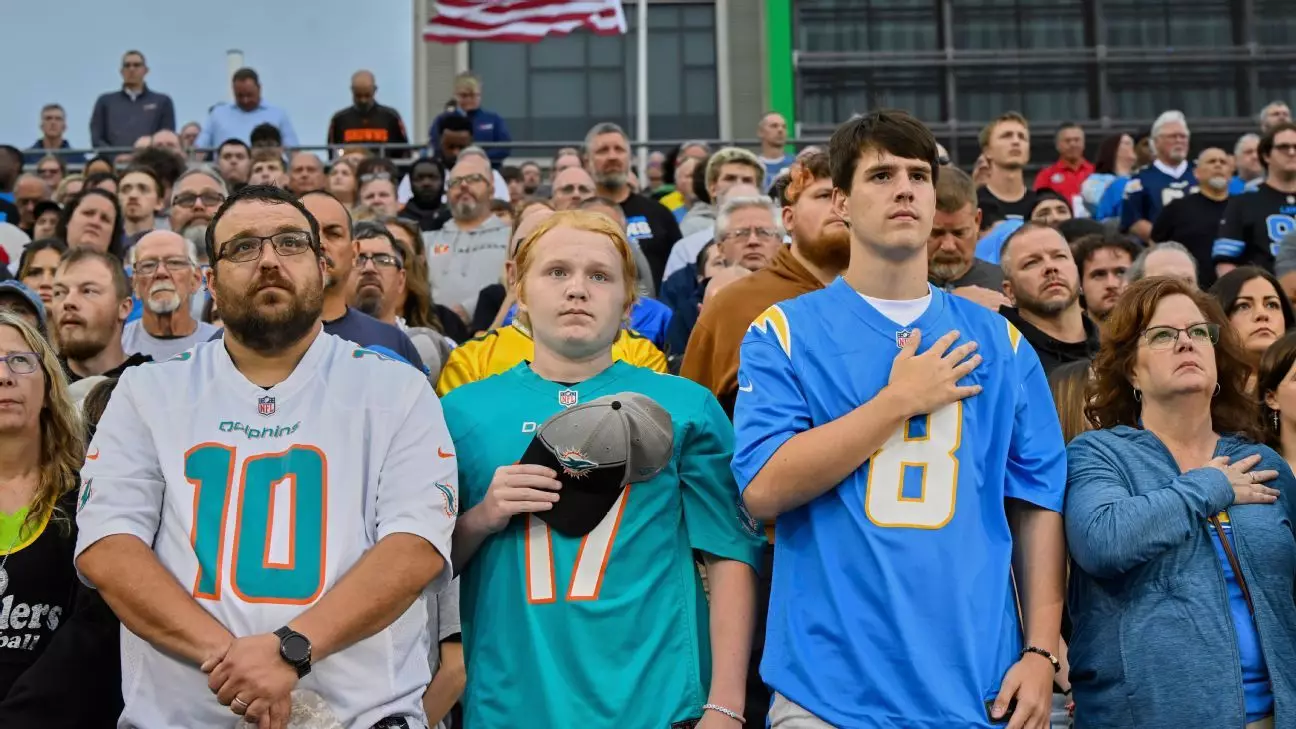The NFL, a league synonymous with sport, entertainment, and national pride, recently found itself overshadowed by a grim reminder of the pervasive violence bleeding through American society. The opening moments of the season, typically a celebration of athletic excellence, were marred by the somber acknowledgment of a horrifying shooting targeting league headquarters. It’s a stark juxtaposition—on one hand, the grandeur of professional football, and on the other, the unrelenting reality of violence that continues to threaten the safety of players, staff, and communities. This juxtaposition reveals how superficial the league’s image of security truly is. Despite sophisticated security measures, the threat persists, exposing a dangerous gap between illusion and reality when it comes to protecting those within this high-profile institution.
The Illusion of Control in a Chaotic World
Commissioner Roger Goodell’s public expressions of concern and visits to injured employees would be commendable if they weren’t tainted by the superficiality that often accompanies corporate responses to tragedy. Their focus remains largely on reassurance—highlighting that an injured worker is improving or that the league remains committed to safety—yet these are fleeting comforts in the face of a systemic inability to genuinely address the root causes of violence. It appears the NFL, much like many large institutions, harbors a dangerous tendency to downplay or sideline the deeper issues: mental health, societal aggression, and the failure to create authentic environments of safety. Their gestures, while heartfelt, do little to challenge the underlying societal conditions that breed such senseless acts, revealing a performative approach rather than substantive change.
The Contradiction of Recognition and Denial
Amidst the chaos, the NFL continues to honor its icons, with Hall of Fame inductions planned amidst increased security measures. However, this celebration seems tone-deaf in a society grappling with the omnipresence of violence. Recognizing legendary players in a time when the league’s own employees and stakeholders are vulnerable underscores an uncomfortable truth—it’s easier to celebrate the sport’s history than confront the peril that lurks just outside stadium gates. The league’s response to tragedies, including increased security and virtual town halls, feels like damage control rather than a genuine commitment to dismantling the mechanisms that allow violence to seep into their domain.
Systemic Failures and the Myth of Individual Preparedness
Investigation into Shane Tamura’s tragic actions reveals a broader societal failure—a failure to address mental illness and toxic grievances before they manifest violently. The fact that he had a history of mental health issues and a misguided grievance about traumatic brain injury underscores the need for a more comprehensive mental health approach, especially within high-stress environments like professional sports organizations and workplaces in general. The NFL’s acknowledgment of Tamura’s suicide and the mention of his note about CTE illustrates how little society truly understands or prioritizes mental health issues, especially those linked to physical trauma. Instead of focusing on prevention, institutions like the NFL tend to respond reactively, deploying security measures and public relations campaigns once tragedy strikes.
Reimagining Safety and Responsibility in American Institutions
The NFL’s predicament reflects a broader national failure to tackle violence at its roots. Rhetorically, leagues and organizations like the NFL claim to prioritize safety, but their actions often fall short, rooted in a defensive posture that seeks to protect reputation over meaningful change. As a society, we should demand more than symbolic gestures and incremental security upgrades; we must ask challenging questions about our collective responsibility to prevent violence, whether in sports, schools, or workplaces. The myth that technology and security protocols alone can safeguard us is dangerously flawed. Instead, a commitment to fostering healthier communities, better mental health support, and systemic reforms is essential if we want a society where violence is genuinely diminished, not just superficially contained.
In the end, the NFL’s current response to tragedy—while laced with empathy—is ultimately insufficient. It reveals a distracted focus on image rather than real safety. If the league truly wants to serve as a beacon of community and resilience, it must acknowledge its complicity in broader societal failings and actively contribute to meaningful change that extends beyond the football field. Only then can it begin to rebuild trust and demonstrate that true safety cannot be achieved by security measures alone, but through confronting the deeper issues that threaten us all.


Leave a Reply